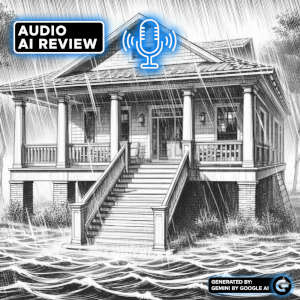AI Resources
Month 2: Navigating Insurance Claims
Homeowner's Guide: Navigate insurance claims and become your own general contractor. Ensure your home gets the necessary repairs and avoid financial pitfalls.
By Murray Wennerlund, published , updated .
Month 2: Private Homeowners Insurance.
Navigating Insurance Adjuster Inspections: Ensuring Your Home Repairs Are Fully Covered
When disaster strikes, homeowners rely on their insurance companies to cover the cost of necessary repairs. However, it's not uncommon for insurance adjusters' inspections to result in payouts that fall short of covering the full extent of the damage. This article aims to shed light on this issue and provide homeowners with tips and strategies to secure the compensation they need.
The Challenge of Inadequate Insurance Payouts
After a major disaster, insurance adjusters are sent to assess the damage and determine the payout for repairs. Unfortunately, these assessments may not always capture the full scope of the damage, leading to inadequate compensation. Factors such as rushed inspections, lack of expertise, or differences in policy interpretation can contribute to this problem.
The Struggle for Full Coverage
In the aftermath of natural disasters and unexpected damages, homeowners often turn to their insurance companies for financial assistance to cover repair costs. However, a growing number of homeowners are finding that insurance companies are not paying for the full extent of repairs needed, forcing them to take matters into their own hands. This article aims to shed light on the challenges homeowners face and provide guidance on how to become your own general contractor to ensure your home gets the repairs it needs.
Despite having comprehensive insurance policies, many homeowners are discovering that the payouts they receive are insufficient to cover the full cost of repairs. Insurance companies, citing policy limits, depreciation, and other factors, often provide partial reimbursements, leaving homeowners with significant out-of-pocket expenses.
Taking Control: Creating Your Own Estimates Ensuring Adequate Coverage
When insurance companies fall short, homeowners must step up to create their own estimates for the necessary repairs. Here are some steps to help you get started:
-
Document the Damage:
Before the adjuster arrives, take detailed photos with time date stamp if possible of all damaged areas. Make notes on the extent of the damage and any immediate repairs that you have already made. Keep a log that lists image names with your corresponding notes. You can use the image name at the state of your notes to be able to reference the images quickly. You can never have too many photos and different angles and distances from the point of interest for your insurance claim. This includes personal property when documenting take pictures of make, model, serial numbers, front, side, top, bottom if each inventoried item from toothpaste to chainsaws. -
Be Present During the Inspection:
Should you Shadow the Inspector During the Inspection? Yes and No, be available to the inspector to quickly answer any questions they may have for you but do not interrupt their inspection process. Interact only when they ask while they are in the process of inspecting. You can review structures that your insurance covers to make sure they are all documented. Your inspector is going to want you to document your personal property while they document the residential home and any accessory buildings covered. Because you documented everything before the inspector you can review your inspectors findings after their report is filed and you will have time to file an appeal for anything you feel was not covered or addressed correctly or any items that were missing from the inspection.
The homeowner and policy holder should be present when the adjuster conducts their inspection. If you have identified areas of damage that you either covered up to prevent additional damage to your structure you can point out what you did so the inspector will understand they may need to review tarps or boards to see the actual damage.
You can meet with the inspector after the inspection to discuss followups and if any additional information is required. Your inspector will work with you up to the point your claim is filed for both structural damage and personal property damage. -
Obtain Multiple Estimates:
Get estimates from several contractors and handyman service companies both large and owner operator size. You may need to hire licensed companies and you may need for them to be eligible to file for inspection permits from your local municipal government. You can also hire a qualified inspector that uses the Xactimate Estimating Software to give you a more accurate costs. -
Request a Reinspection:
If you believe the adjuster’s initial assessment was inadequate, request a reinspection. Provide additional information and evidence, such as contractor estimates and detailed documentation, to support your request. You can also request for a remote inspection that you would either conduct by video phone call, zoom type meeting or by email exchange with a qualified inspector. -
Compile Receipts and Invoices:
Keep all receipts and invoices for any repairs already completed. This documentation will be crucial when submitting for reimbursement. -
Hire a Public Adjuster:
You may want to consider hiring a public residential structure adjuster, who works independently and can provide a more thorough assessment of the damage. Public adjusters can advocate on your behalf and negotiate with the insurance company to secure a fair payout. See Legal Assistance. -
File an Appeal:
If you are not satisfied with the insurance company's decision, file an appeal. Follow the procedures outlined in your policy and provide all necessary documentation to support your case. -
Seek Legal Assistance:
If all else fails, consider hiring an attorney who specializes in insurance claims. A lawyer can help you navigate the legal complexities and ensure you receive the compensation you deserve. Your lawyer that specializes with insurance claims will have a public adjuster they use exclusively to better assess the damage making their negotiations stronger.
Dealing with insurance adjusters and securing adequate payouts for home repairs can be a difficult task. However, by being proactive and well-prepared, you can increase your chances of receiving the compensation you need to reduce your disaster debt burden. Remember to document everything, be present during inspections, obtain multiple estimates, and don't hesitate to seek outside assistance.

